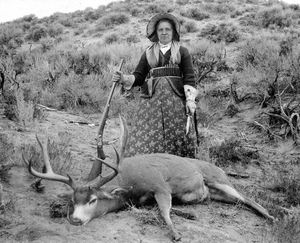While economy slumps, hunters gain numbers
HUNTING -- The U.S. Fish and Wildlife Service last week reported a total of 14,974,534 paid license holders for 2009, the largest figure since 2002 and an increase of 526,494 since 2008.
Paid license holders have increased in 24 states in the five-year period from 2005 to 2009.
The 3.6 percent rise in paid license holders represents the largest year-over-year increase since 1974. (A "paid license holder" is one individual regardless of the number of licenses purchased.)
The National Shooting Sports Foundation cites several contributing reasons for the increase:
- Many state wildlife agencies over the last decade have launched programs to increase hunting participation.
- A difficult economy motivated hunters to fill their freezers with game rather than store-bought meat.
- Hunters who were among the unemployed or had their work hours reduced used some of their free time to go hunting.
The hunting heritage has never been more valuable to the country than today, with urbanization and development gobbling up wildlife habitat in critical areas.
The 21 million hunters who have purchased at least one hunting license in the past five years are the backbone of conservation funding in America, contributing more than $1 billion each year through the purchase of licenses, tags, permits and stamps and through excise taxes paid on firearms and ammunition.
The NSSF points out that proceeds from the sale of Federal Duck Stamps, a required purchase for migratory waterfowl hunting, have purchased more than 5 million acres of habitat for the National Wildlife Refuge System.
